Patterns
Kits
sundries
knitting tools, buttons and notions, project bags and other pleasing little things
knitting tools, buttons and notions, project bags and other pleasing little things
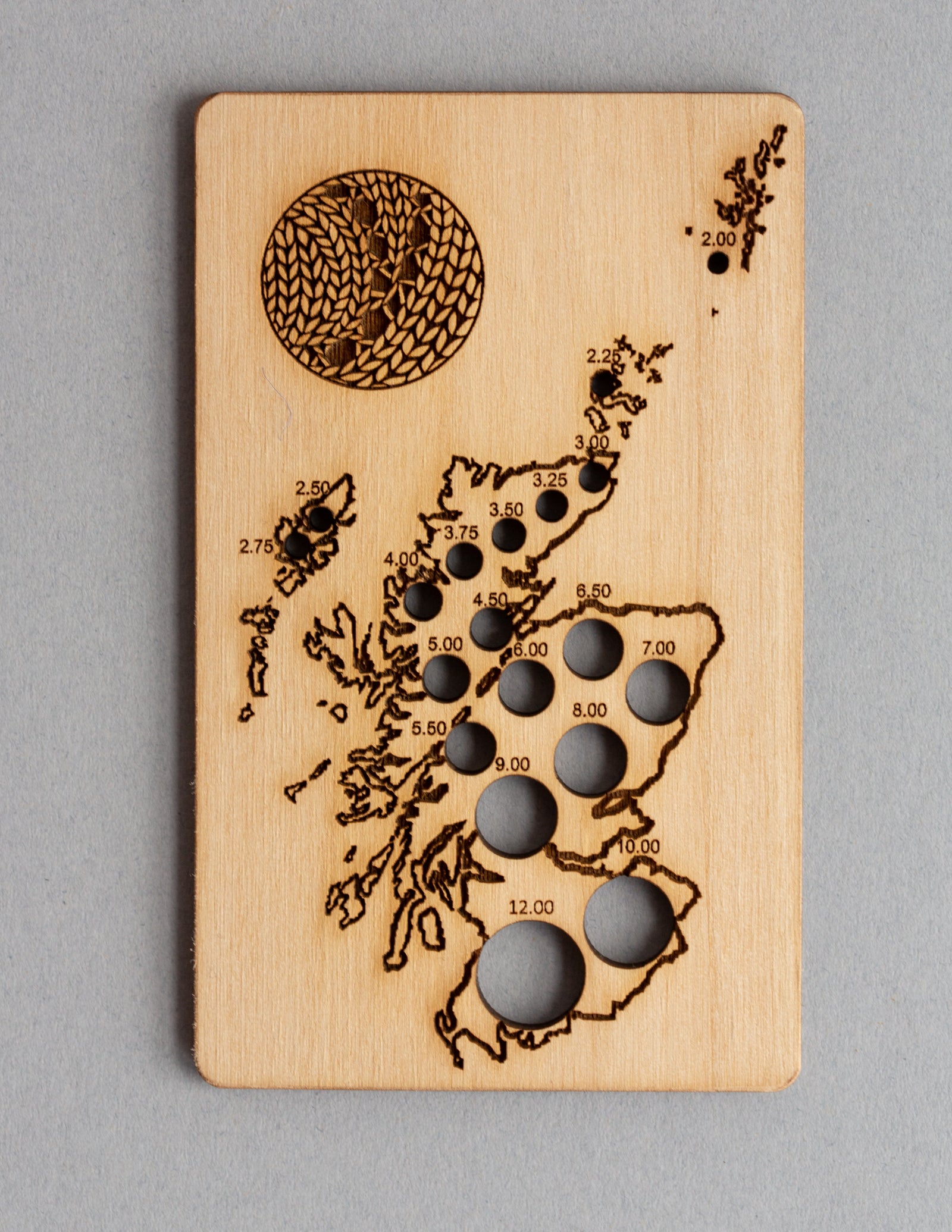
Exclusive Scotland needle gauge by Katrinkles
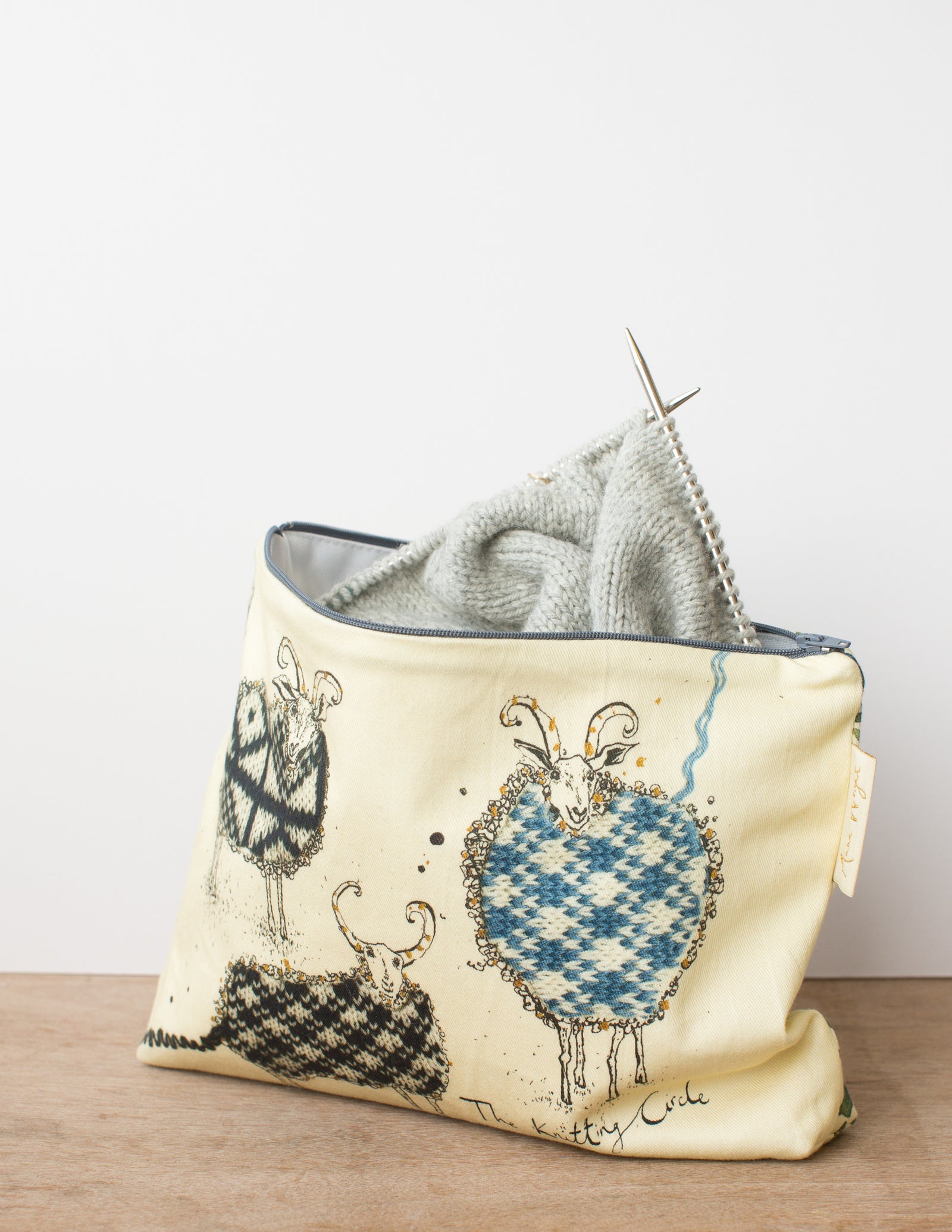
Zippered pouches in two sizes by our studio neighbour Anna Wright
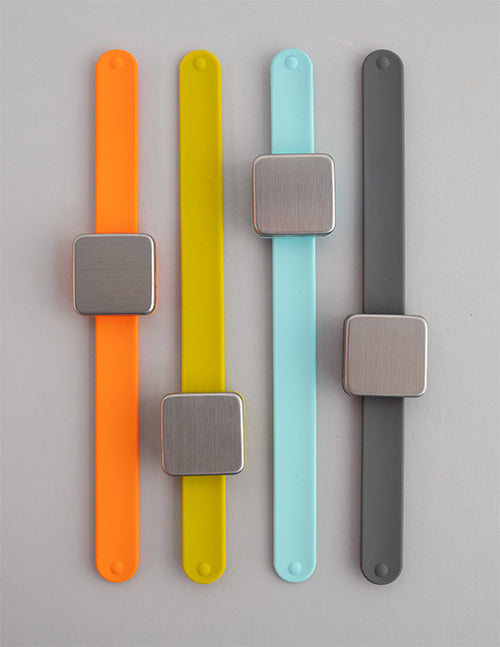
keep small tools accessible with the Maker's Keep
gift 2019
Subscribe to our Colourwork Club for a gift that lasts well into the new year. Your recipient will receive a new colourwork kit in Janurary, February and March

Subscribe to our Colourwork Club for a gift that lasts well into the new year. Your recipient will receive a new colourwork kit in Janurary, February and March


Last minute shopping? Gift cards are delivered electronically - forward the email or print it for your recipient. A range of amounts are available and gift cards don't expire.

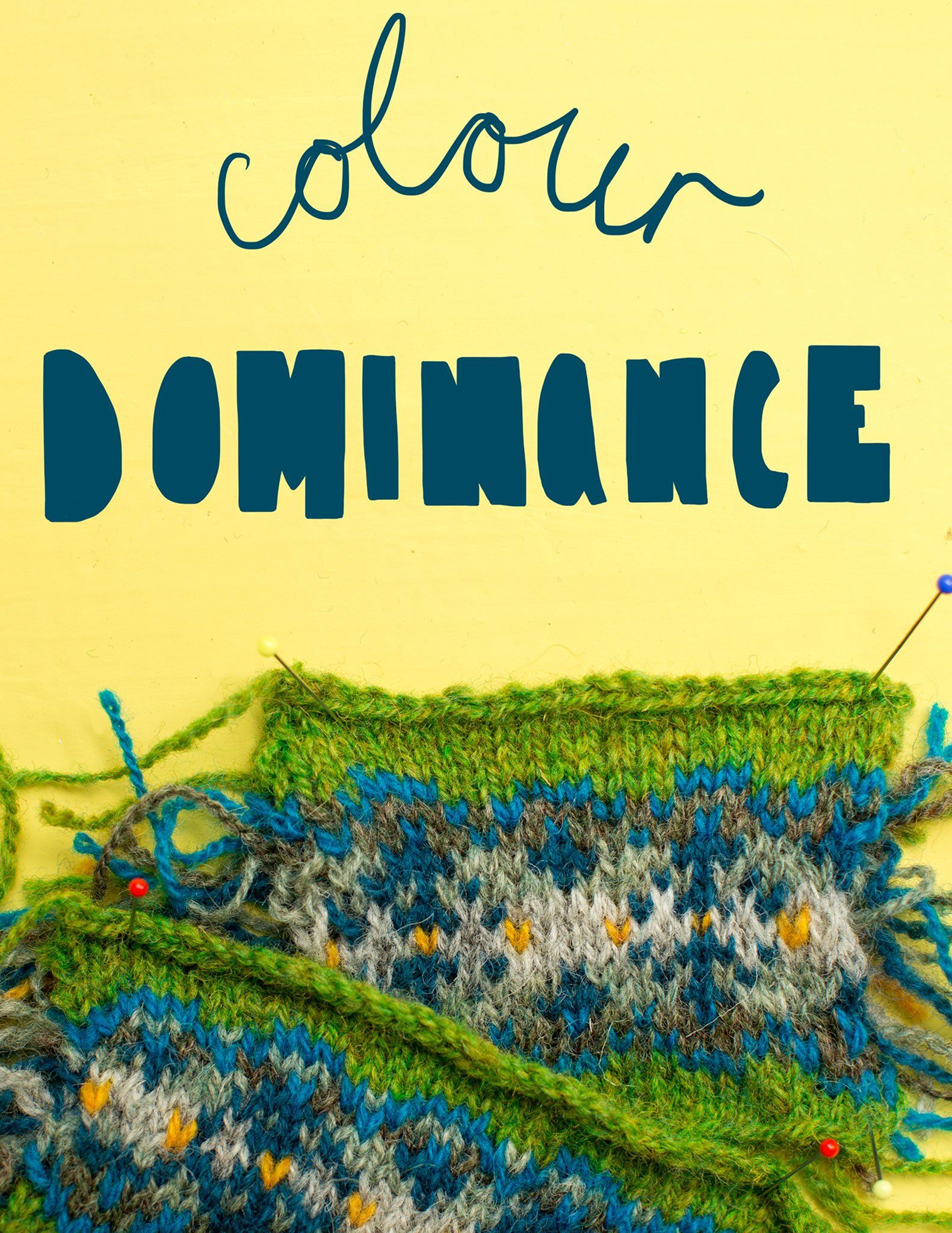
Colour Dominance
May 29, 2014
Wearing more me made clothes this month has led me to really hone in on the kinds of garments I wear most often. A Fair Isle vest would probably be included in even the tiniest of my personal capsule wardrobe so it seems absurd that I don’t actually have one I made myself. Enter swatching. While focussing on playing with colours and practising knitting with dpns and a belt I got distracted from paying attention to the arrangement of my yarns. Although I quickly swapped the colours to the correct hand I started wondering just how big a difference colour dominance really meant.
So I made a mini swatch in the same colours and pattern to see what happened when I switched the dominance. I was shocked by how different the two swatches were. So now we know that colour dominance matters here’s how it works.
In any stranded colourwork you hold one colour so that it’s always coming from under the other colour when you switch yarns. This will naturally be consistent across a row as long as you’re not dropping the yarns and picking them up again when switching colours. I prefer to hold one in each hand but you might like both in one hand better.

If the colour is held higher it’s going straight across to the next set of stitches in its colour. The yarn held lower is dipping down a little before stranding across and then back up again to reach the stitch. Some of that extra yarn naturally transfers into the stitch, making the stitches in the lower yarn bigger. Hence dominant colour — it makes the pattern pop more against the background.


These swatches are a great example of the effect this has: lines made up from single stitches only create a joined up line in the pattern when worked in the dominant colour. The only thing that’s changed between the two swatches is which colour was dominant on each row otherwise they’re the same pattern in the same colour combination (except for one row on the first swatch where I was trying out the the other background colour). The one on the right is a bit distorted at the edges because the swatch was so tiny.
Knowing which colour should be dominant
The pattern colour should always be dominant but it’s easier to tell which is the pattern and which is the background on some charts than others. For traditional Fair Isle charts I vastly prefer charts like this where the pattern and arrangement of colours are separated.

The dotted squares are worked in the pattern colour and the empty squares in the background colour. The coloured columns then show which colour is to be used for the pattern and which for the background on each row — sometimes the same colour will be a background colour on one row and a pattern colour on a later row. In this case it also allows two very different palettes to be given for the same pattern.
Not all designs have a clear pattern vs background. In that case the most important thing is to be consistent.
Also in Journal
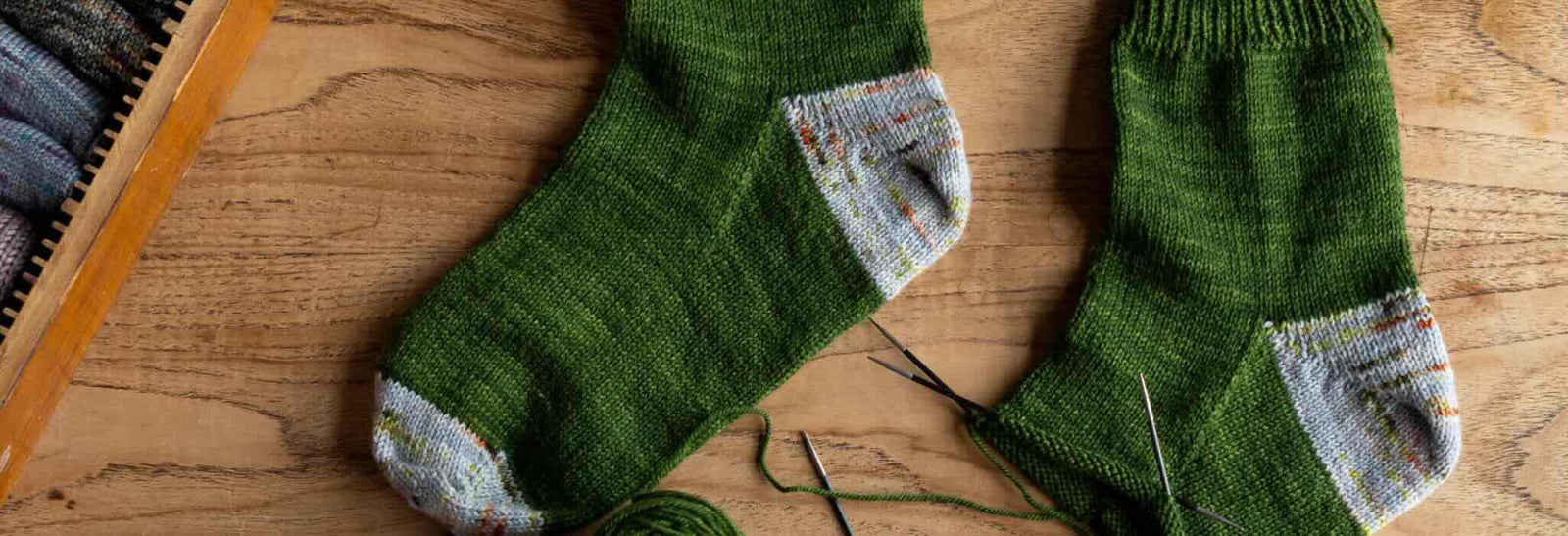
Deep Shadow Heel Tutorial
September 25, 2025

20 Years of Ysolda Knitting Patterns: Part 2
June 23, 2025

20 Years of Ysolda Knitting Patterns: Part 1
June 19, 2025
Recent Articles
-
Deep Shadow Heel Tutorial
September 25, 2025
-
20 Years of Ysolda Knitting Patterns: Part 2
June 23, 2025
-
20 Years of Ysolda Knitting Patterns: Part 1
June 19, 2025
-
Learn to Knit: Mattress Stitch
March 29, 2023
-
How to Knit a Scarf: A Beginners Guide to Scarf Knitting
March 23, 2023
-
Learn to knit: the long tail cast-on
February 03, 2022
-
How to Graft Your Knitting
December 09, 2021
-
Crochet Provisional Cast-on
December 02, 2021
-
Learn to knit: How to knit in the round with double pointed needles
November 25, 2021
-
Learn to knit: How to knit in the round using the magic loop technique
November 25, 2021
Free resources
-
KALS, step-by-step pattern guides and free patterns
Learn brioche with the free Daniel's Hat pattern
Tombreck - a free chevron beanie pattern
Working the brioche neck detail on the Polwarth sweater
Installing a zipper and ribbon, finishing wee Carson
Yarn colour ideas for Threipmuir sweater
Additional colourways for the Joy mitts (choose your pride flag)
How to join the shoulders on Wardie
How to join the pockets on Granton and Wardie
Finishing Resources for Granton
Broughton mittens tutorial part 1
Broughton mittens tutorial part 2
Broughton mittens tutorial part 3
Basics
Casting on
Decorative Channel Island Cast-on
Binding off
3 Easy Stretchy Bind-offs (p2tog bind-off; k2togtbl, k1 bind-off; Jeny's surprisingly stretchy bind-off)
Tubular Bind-off for brioche stitch
Increasing
Paired increase methods compared
How to continue in pattern while increasing and decreasing
Decreasing
Brioche stitch double decreases
Knitting in the round
How to Knit in the round using Magic Loop
How to Knit in the round using DPNs
Short rows
Swatching and gauge
Tips and tricks
Avoiding ears when binding off
Tighter purl stitches for neater cables and ribbing
Cabling without a cable needle
How to knit more symmetrical yarn overs
Bust darts in sweaters with all over stitch patterns
A magic formula for evenly distributing shaping
Superwash v Non-Superwash Wool
Picking up sts from the middle of the fabric
Reading knitting patterns
Understanding "continue in pattern"
Help! Where am I in my knitting project?
Using charts, even if you hate them
Finishing
Garment knitting
Joining the body and sleeves on a seamless bottom up sweater
Sizing
Ysolda’s sizing chart for knitwear designers
Inclusive garment knitting
How to pick a garment without a model for you (specifically addresses finding garment patterns when your gender identity isn't represented and the styles you want to knit might not be sized to fit your body)
How does ease affect inclusive size ranges?
Specific stitch patterns
Lace
Identifying and fixing mistakes in lace knitting
Colourwork
Getting started with stranded colourwork
Understanding colour dominance
Working stranded colourwork over small circumferences
Decreases in stranded colourwork
Holding the yarn for stranded colourwork
Ladderback Jacquard (a neat way to deal with long floats)
Cables
Cabling without a cable needle
Cabling without a cable needle on the wrong side
How to knit cabled decreases
Closed ring cable increases and decreasesBrioche
How to work brioche stitch in the round
Other crafts
Cross stitch
How to begin your first large cross stitch project
How to finish a cross stitch project with an embroidery hoop frame
Mending

Sign up today
Find out the latest news from the studio such as sales, pattern releases, and new workshops or KALs our learning community, The Knitwork. We also share helpful tips and exclusive subscriber discounts...



